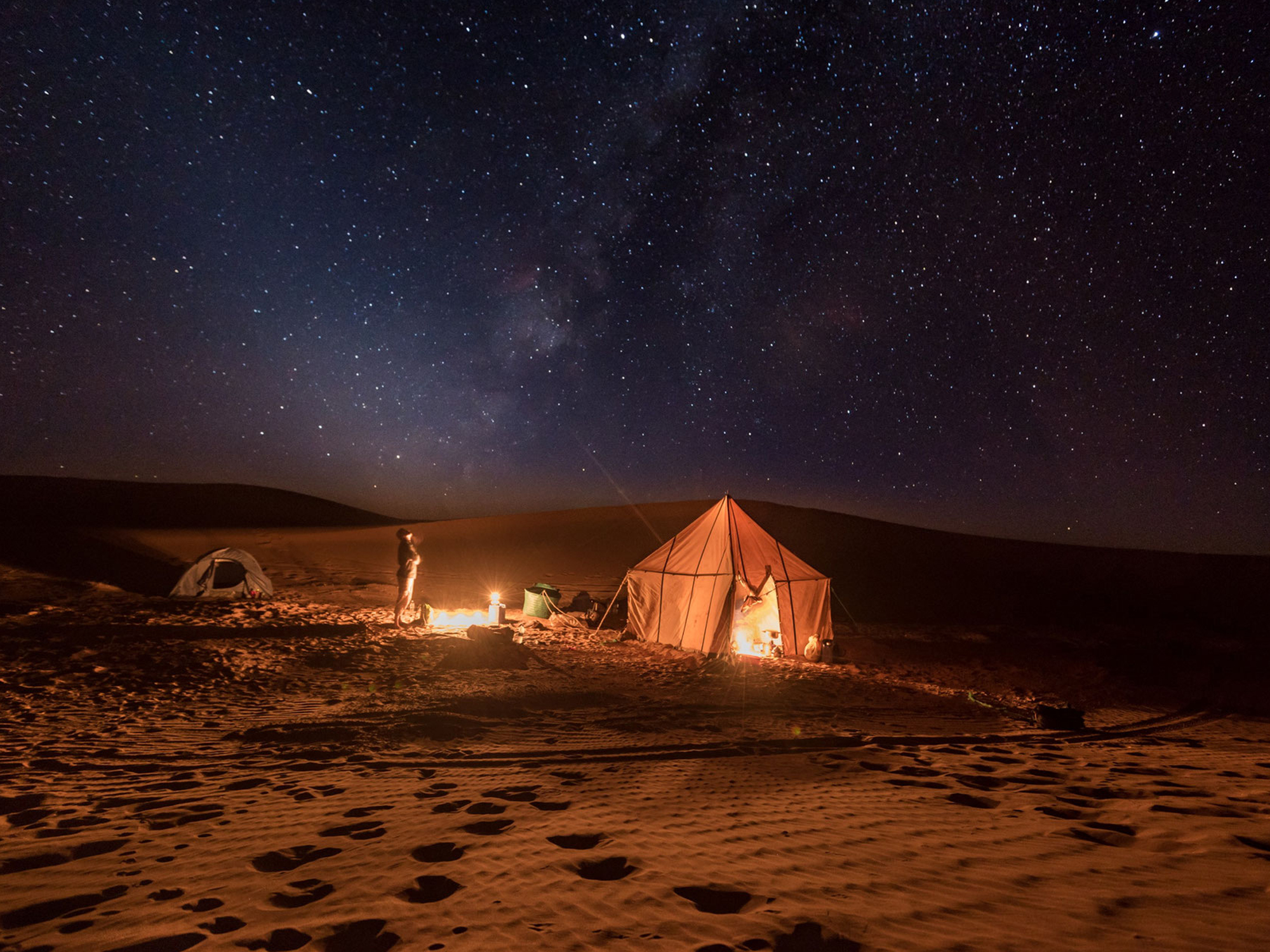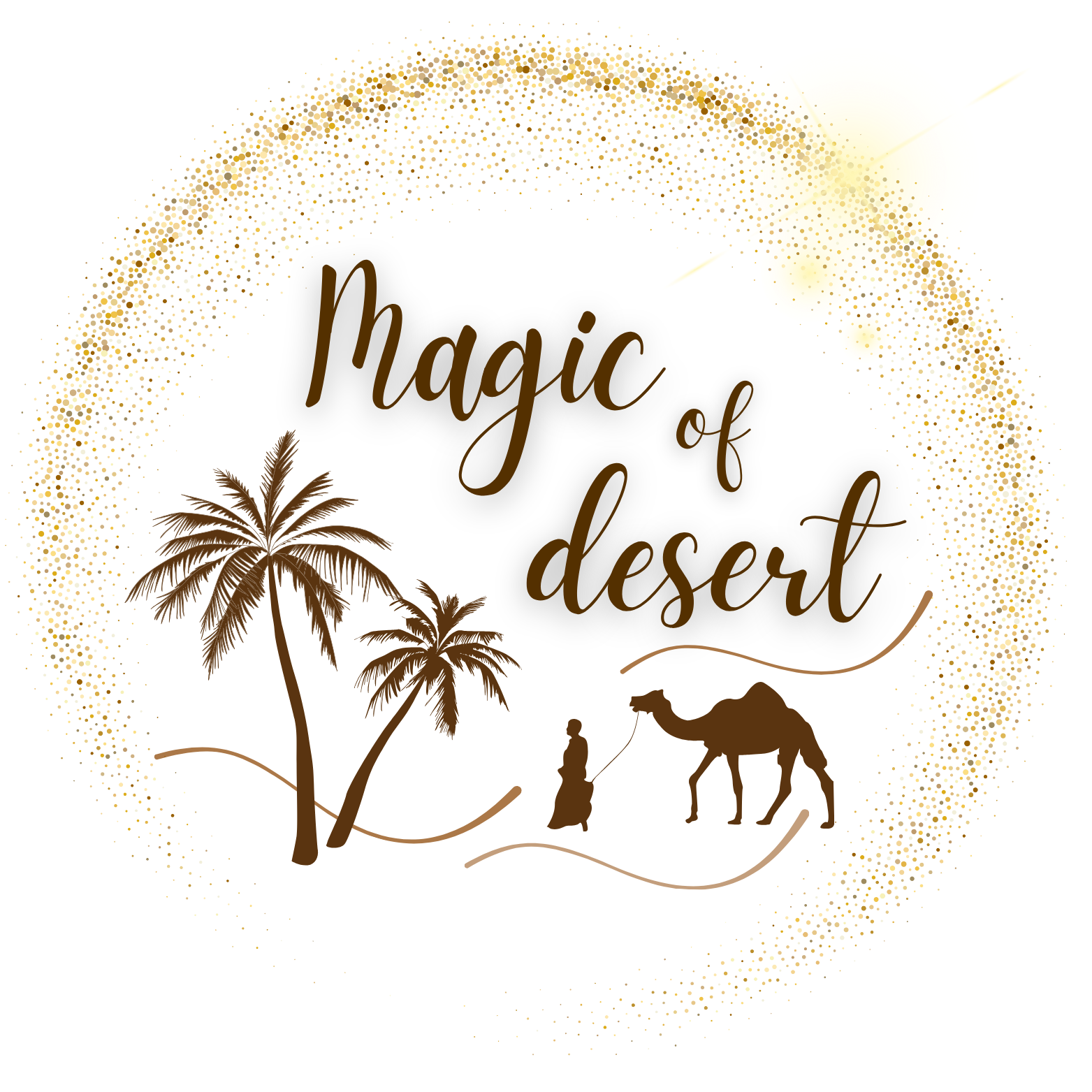Desert Habitat – How Can We Protect This Fragile Ecosystem?
The Moroccan Sahara is a magical place – endless dunes, deep silence, and breathtaking vastness. Those who embark on a Morocco desert tour immerse themselves in a landscape that is a precious habitat not only for humans, but also for countless animals and plants. However, this delicate environment is increasingly under threat – not only due to climate change but also because of careless human behavior.

The Hidden Inhabitants of the Sahara
At first glance, the desert may seem barren and hostile to life, but a closer look reveals a fascinating world teeming with life. Many of its inhabitants are perfectly adapted to the harsh conditions and often only appear at night to escape the scorching daytime heat. Among the animals of the Sahara are:
- Lizards and various types of desert geckos that move lightning-fast across the sand.
- Desert foxes (fennecs) with their large ears that help them cool down in the heat.
- Snake eagles, vultures, and falcons soaring high above, searching for prey.
- Dorcas gazelles and the rare scimitar-horned oryx, both well-adapted to arid climates.
- Wild donkeys, once widespread but now highly endangered.
- Desert hedgehogs, which forage at night.
- Ostriches, reintroduced in some regions.
- Scorpions and snakes, most common in summer, usually hidden and avoiding human contact.
- The caracal (desert lynx) – once common, now endangered.
These animals often leave only subtle traces – tiny burrow entrances, delicate footprints in the sand, or sparse droppings. Only those who walk through the Sahara with open eyes can notice these signs and truly experience the desert.
Reckless Tourism – Destruction on Four Wheels
This sensitive ecosystem is increasingly endangered – not just by prolonged droughts, but mainly by human activity. Quad tours, motorcycle rallies, and off-road safaris are becoming more common. What may be an adventure for thrill-seekers means chaos and destruction for nature and wildlife.
When off-road vehicles, quads, and motorcycles tear through the dunes without caution, they often unknowingly destroy the habitats and shelters of many animals. The few species that still reside here are pushed back further. Particularly alarming are the large European-organized rallies that pass through the Sahara several times a year. For days, countless vehicles roar across the otherwise quiet landscape, leaving behind deeply scarred dunes and a trail of devastation.
After such events, the desert resembles a ploughed battlefield. Participants pay thousands of euros in entry fees, which usually benefit only the organizers and sponsors. Not a single cent goes toward nature preservation. On the contrary – the damage remains, and the local population is left to deal with the consequences.
Litter – An Underestimated Danger
Another major issue is the litter carelessly discarded in the desert – food packaging, metal and glass waste, plastic bottles abandoned after a rest stop or thrown out of car windows while driving. A particularly concerning problem around M’hamid is the plastic landfill whose trash is scattered across the desert by the wind. I’ve even found used batteries in the dunes.
This waste poses a serious threat to wildlife. Camels consume plastic, which accumulates in their stomachs and often leads to a slow and painful death. Small desert animals get caught in nets or die from polluted water sources. The centuries-old beauty of the Sahara is being defiled by human hands – even though preventing this would be so easy.
Sustainable Desert Stewardship – A Look at Namibia
But it doesn’t have to be this way. Namibia, home to one of Africa’s largest desert landscapes, has managed to protect its nature consistently. 44% of the country is under conservation or sustainable management. Namibia was the first African nation to include environmental protection in its constitution, creating a unique approach: rural communities directly benefit from eco-tourism revenues. This fosters awareness that preserving nature is more valuable in the long term than short-term exploitation.
This example shows that conscious and sustainable desert tourism is not only possible, but necessary. In Morocco too, there are already initiatives advocating for responsible tourism. But it is up to all of us – travelers, tour operators, and locals – to protect this fragile habitat.
Our Commitment to a Sustainable Desert Experience
At Magic of Desert, we are deeply committed to respecting the Sahara. This wondrous desert gives us so much – silence, space, and magic – values that deserve to be preserved. That’s why we focus on sustainable and mindful desert tourism.
We consciously avoid quad biking and reckless off-road driving to protect the fragile environment. Even when using 4x4 vehicles, we carefully choose our routes to avoid damaging habitats. Instead, we invite our guests to experience the desert with all their senses – on foot, by camel, and with knowledgeable guides who honor the wisdom of the nomads and approach the desert with deep respect.
We are especially dedicated to reducing waste in the desert. Plastic trash blown across the dunes by the wind endangers both animals and the environment. To counter this, we incorporate small cleanup actions into our tours – a simple gesture with a big impact. Every guest can contribute by always taking their waste with them and staying mindful of keeping this beautiful place clean.
Only those who enter the desert with awareness will recognize its true beauty. Together, we can take responsibility – for the Sahara, its inhabitants, and the generations to come.
